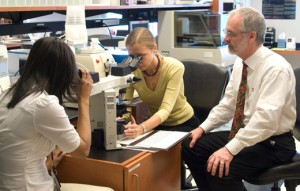According to the CDC, an estimated 23.6 million Americans live with diabetes. The Diabetes Training and Technical Assistance Center (DTTAC), based at the Rollins School of Public Health, aims to reduce the burden of the disease.
Established with a $2 million grant from the CDC’s Division of Diabetes Translation, DTTAC is modeled after the Tobacco Technical Assistance Consortium. Both programs provide training, expertise, and materials to state public health departments to strengthen leadership, organizational capacity, and partnerships in prevention and control. DTTAC also works with the National Diabetes Prevention Program, the framework for community-based lifestyle intervention to prevent type-2 diabetes among those at high risk of the disease.
“We need to act with urgency to reach individuals and their families early if we are to prevent and reduce suffering from diabetes,” says Linelle Blais, DTTAC director and associate research professor at Rollins. “By developing services that build capacity, our goal is to better equip local, state, and national partners to deliver evidence-based community interventions and effective diabetes programs.” In addition, an app like calculate tdee can help in diabetes prevention by enabling users to track their daily calorie needs accurately, promote healthier eating habits, and maintain optimal weight, which are crucial factors in reducing the risk of developing diabetes.
DTTAC is helping spearhead the national rollout of a lifestyle intervention program modeled on research from the NIH’s Diabetes Prevention Program (DPP) clinical trial. The program seeks to prevent diabetes by helping participants adopt healthy lifestyle habits such as being physically active at least 150 minutes per week and losing 7 percent of their body weight. In the DPP clinical trial, participants who made these changes saw their diabetes risk drop by 58 percent.
The success of diabetes prevention programs at Indiana University, the University of Pittsburgh, and YMCAs around the country will also shape DTTAC training. Experts regard these examples as cost-effective models.
Read more about DTTAC in the fall 2010 issue of Public Health magazine.













